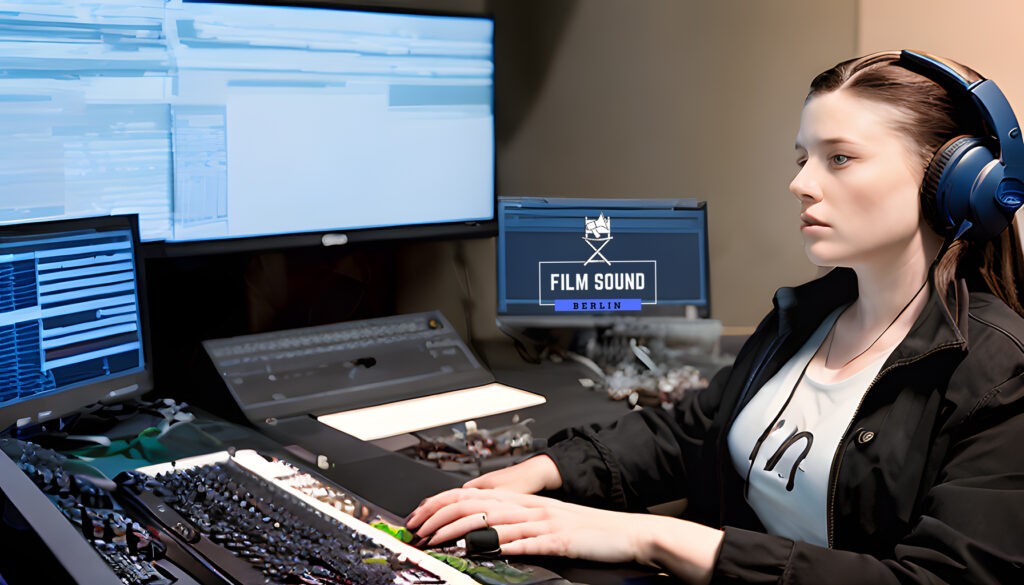In the ever-evolving landscape of filmmaking, advancements in technology continue to reshape traditional processes and revolutionize creative possibilities. One such area of innovation is the integration of Artificial Intelligence (AI) in Automatic Dialogue Replacement (ADR) techniques. In this comprehensive guide, we will explore the intersection of AI and ADR, highlighting the transformative impact it has on audio post-production in the film industry.
Understanding ADR in Film
Before delving into the realm of AI, let’s first establish a foundational understanding of ADR in film. ADR, also known as “dubbing” or “looping,” is the process of re-recording dialogue in a studio environment to replace or enhance the original on-set recordings. It ensures clarity, synchronization, and optimal audio quality in the final film.
The Role of AI in ADR
AI technologies have made remarkable strides in recent years, and they are now being harnessed to streamline and enhance the ADR process. Here are some ways in which AI is transforming ADR in film:
Automatic Lip-Sync: AI algorithms can analyze the lip movements of actors in the original footage and automatically generate synchronized mouth animations for the re-recorded dialogue. This eliminates the need for manual adjustments, saving significant time and effort during the ADR process.
Voice Matching and Emulation: AI-powered voice recognition and synthesis techniques allow for seamless voice matching between the original performance and the ADR recordings. This ensures consistent vocal characteristics and performances, creating a cohesive audio experience for the audience.
Dialogue Restoration and Noise Reduction: AI algorithms can intelligently analyze the original audio recordings and remove unwanted background noise, echoes, or other distortions. This results in cleaner and more professional-sounding dialogue in the final mix.
Translation and Localization: AI language processing capabilities enable efficient and accurate translation of dialogue into different languages for international distribution. This opens up new avenues for reaching global audiences while maintaining the artistic integrity of the film.
Benefits of AI-Driven ADR
The integration of AI technologies in ADR brings forth a multitude of benefits, revolutionizing audio post-production in film:
Time Efficiency: AI-powered automation reduces the time required for manual adjustments and lip-syncing, allowing filmmakers to allocate more time to other critical aspects of post-production.
Improved Accuracy: AI algorithms can achieve remarkable precision in lip-syncing and voice matching, ensuring seamless integration of ADR dialogue with the visuals.
Enhanced Creativity: By streamlining the technical aspects of ADR, AI frees up creative professionals to focus on performance refinement, emotional nuances, and overall storytelling.
Cost Optimization: AI-driven ADR reduces the need for extensive retakes or additional on-set recording sessions, resulting in cost savings for film productions.
Consistency and Continuity: AI algorithms maintain vocal consistency throughout the film, even when multiple ADR sessions are required. This helps preserve the integrity of character portrayals and ensures a coherent audio experience.
The Future of AI in ADR
As AI continues to advance, we can anticipate further innovations and enhancements in ADR and audio post-production. Here are some potential future developments:
Real-time ADR: AI algorithms may evolve to enable real-time ADR during the filming process itself, eliminating the need for extensive post-production work.
Emotion-based ADR: AI could be used to analyze and synthesize emotional nuances in voice performances, enhancing the expressive capabilities of ADR recordings.
Adaptive Noise Reduction: AI algorithms may become even more adept at distinguishing and eliminating unwanted noise, delivering pristine audio quality without compromising performance.
Improved Translation and Localization: AI language processing may advance to provide more accurate and natural-sounding translations, ensuring the authenticity of localized versions.
Conclusion: Embrace the Power of AI-Driven ADR
The integration of AI in ADR is revolutionizing audio post-production in the film industry. With automatic lip-sync, voice matching, dialogue restoration, and translation capabilities, AI technologies enhance efficiency, accuracy, and creativity in ADR processes. Filmmakers can now deliver captivating cinematic experiences with greater precision and in less time. As AI continues to evolve, the future of ADR holds even more exciting possibilities.
To explore further resources and stay up-to-date with the latest advancements in AI-driven ADR and film production, check out these affiliated sites:
DupDub: Discover cutting-edge AI tools and software designed to enhance your ADR workflow and streamline audio post-production.
Elai: (Extremely Large Artificial Intelligence) is a state-of-the-art language model developed by OpenAI that utilizes advanced deep learning techniques to understand and generate human-like text.
Remember, embracing the power of AI-driven ADR can transform your audio post-production process and elevate the overall quality of your films.
